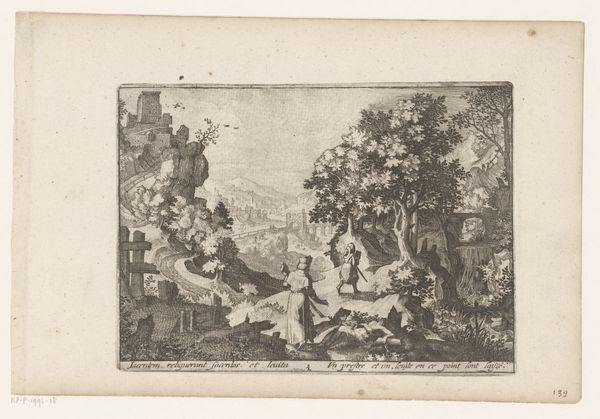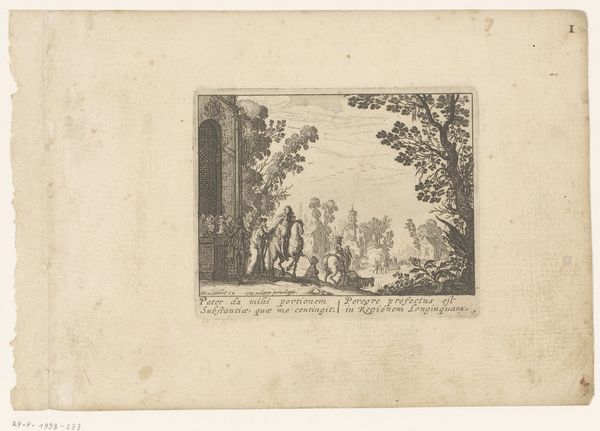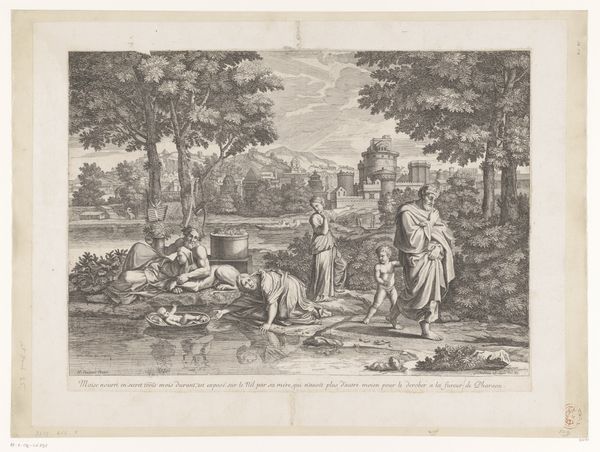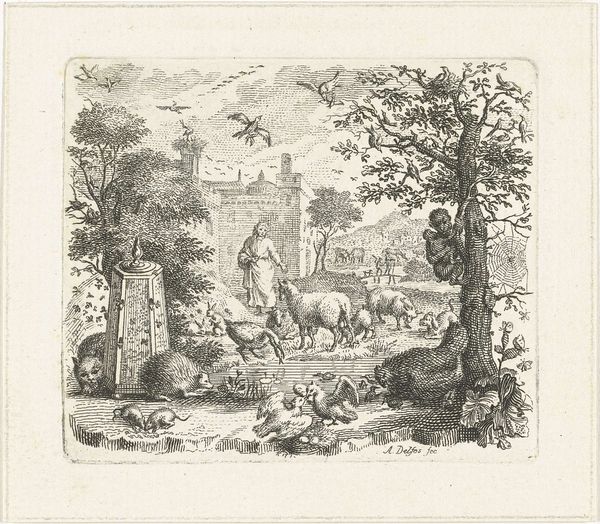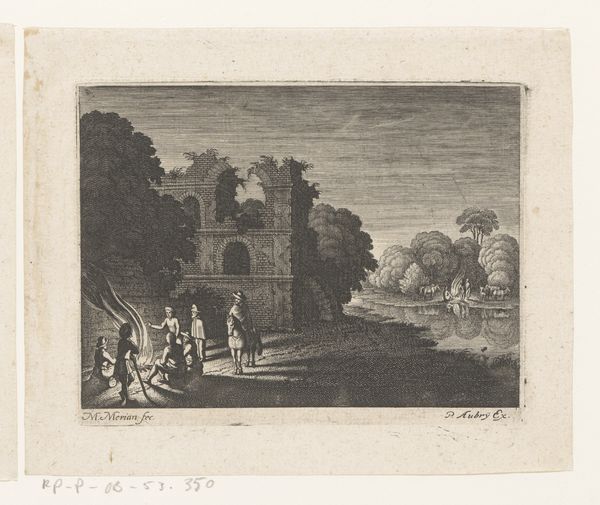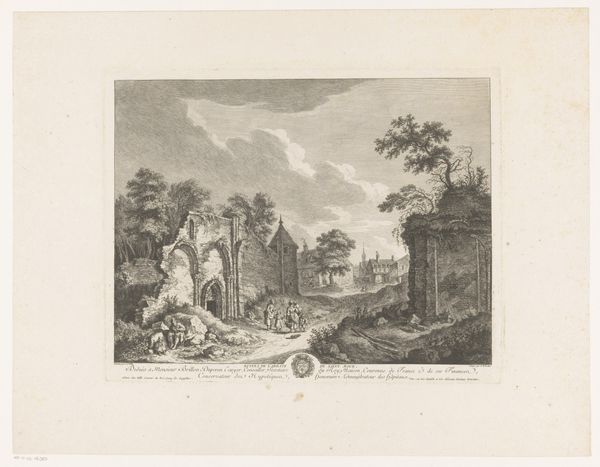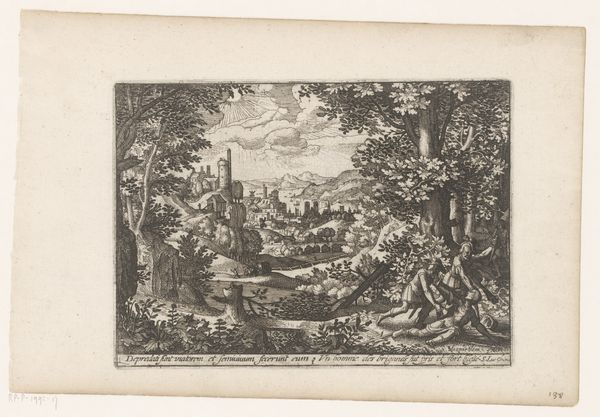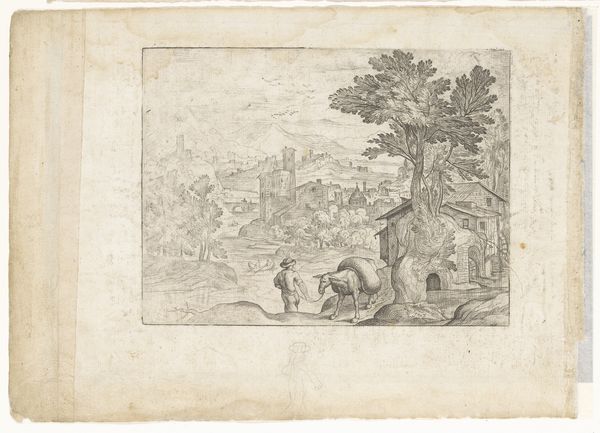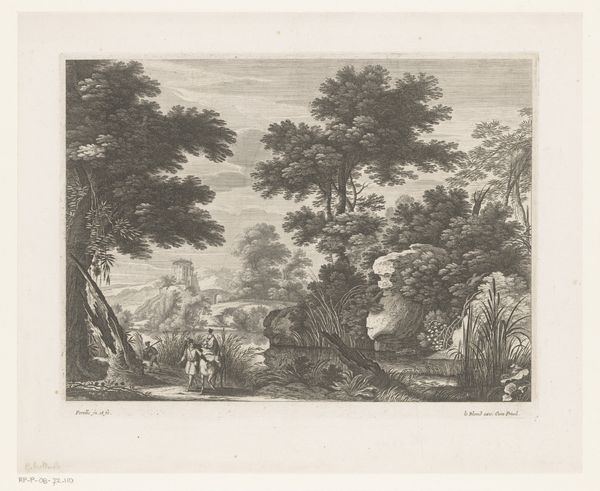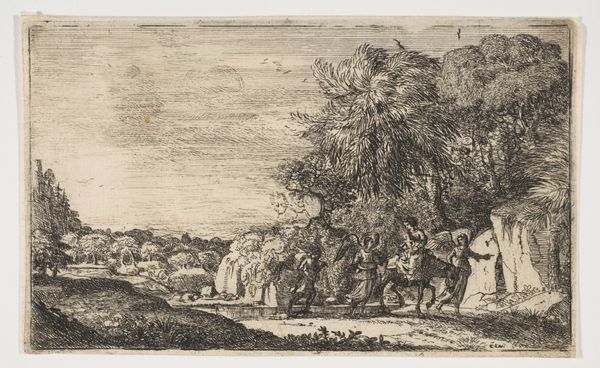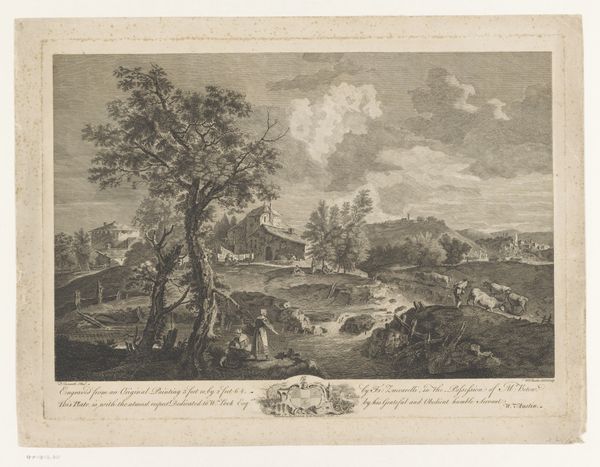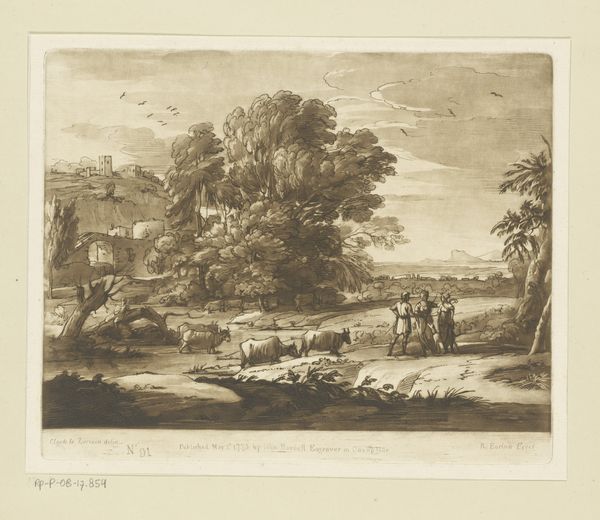
print, etching
#
baroque
#
dutch-golden-age
# print
#
etching
#
landscape
#
cityscape
Dimensions: height 231 mm, width 280 mm
Copyright: Rijks Museum: Open Domain
Curator: This etching, "Landschap met op de achtergrond Huis ten Bosch," attributed to Cornelis Elandts, dates roughly between 1681 and 1728. Its delicate lines offer a window into a Dutch Golden Age landscape. Editor: It feels almost idyllic, wouldn’t you say? A serene escape into nature, but there’s this... underlying tension too, like something’s just out of reach. Curator: Indeed. Observe the meticulously rendered trees and the almost architecturally precise construction of Huis ten Bosch in the background. The contrasting textures and light play create a spatial depth, drawing the eye both into the landscape and toward the building itself. Editor: And the figures—a solitary walker and a reclining dog. They almost appear to be superimposed. Does that relationship symbolize some form of servitude or possibly the human encroachment of private property onto nature? The work reflects the era's growing divide in resource allocation and highlights societal issues embedded in claiming rights of nature and labor. Curator: A compelling perspective. Consider too the frame, intricately etched with botanical motifs, acting as a proscenium arch, further formalizing the scene, elevating the status of what is framed. We might understand this framing, with its implied stage, to create meaning, with an overture of "ownership" in control and hierarchy over our experience. Editor: Precisely. And consider the gaze implied by that very building, asserting dominance and acting to define the entire space depicted in the composition—this extends power structures outward. The formal rendering may celebrate nature, but ultimately serves to consolidate dominion in land and its yield. Curator: An insightful socio-historical reading that unveils those power structures in the very construction of pictorial space, in what, on the surface, might appear simply to be the depiction of landscape. Editor: Understanding how landscape, then, serves as a register, unveiling latent ideologies within the framework itself is very much needed. These scenes, especially when viewed critically, begin revealing that those who "rest" do so because someone else continues to "labor." Curator: Precisely. In the context of art history and semiotics, unpacking the visual language and the inherent power dynamics provides richer meaning that would otherwise remain latent within this visual language. Editor: Art becomes an agent of uncovering truths, so we can interrogate structures of influence, instead of mere visual gratification. Curator: Yes. Together, both close attention and broad reflection permit more meaning for everyone who engages with the work.
Comments
No comments
Be the first to comment and join the conversation on the ultimate creative platform.
